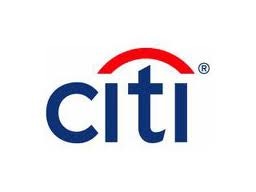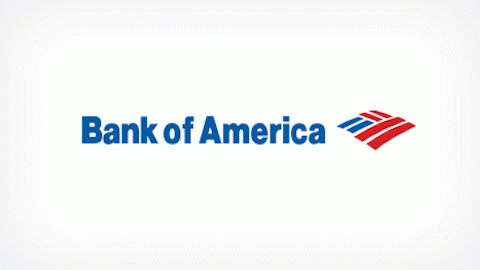During the course of observing the markets before, during, and after the financial crisis, I noticed three specific categories that financial companies could be categorized into. The first are those companies who, through poor lending practice, high leverage, or other general irresponsibility were hit hard by the crisis. This category includes companies who failed, like Lehman Brothers, as well as companies who endured due to government help like Citigroup Inc (NYSE:C). The second category belongs to those banks who stayed relatively neutral, whose loan portfolios had decent quality, and who continued to do what they had been doing. Toronto-Dominion Bank (USA) (NYSE:TD) is a good example of this group.
The third category, and by far the most exclusive club, is those financial institutions that not only survived, but came out of the crisis even better than they went in. These are the companies, like JPMorgan Chase & Co. (NYSE:JPM) that scooped up their failing competitors for pennies on the dollar, boosting their own asset bases and geographic footprint. These are the kind that we should be looking at for the long run, as the full positive impact of some of their savvy moves during the bad times won’t be realized for years. Let’s look a little more in depth at JPMorgan Chase & Co. (NYSE:JPM), and then take a quick look at the other two categories and their long-term investability.
JPMorgan in a nutshell
As one of the world’s leading investment banks, JPMorgan Chase & Co. (NYSE:JPM) serves a range of clients including corporations, governments, other financial institutions, and individuals. The company operates in five segments including: Consumer and Community Banking, Corporate and Investment Banking, Commercial Banking, Asset Management, and Corporate/Private Equity.
During the financial crisis, JPMorgan scooped up both Bear Stearns and Washington Mutual for a small fraction of what they were worth just a few years earlier. The result was both a massive spike in assets during 2008 (as seen on the chart above) and a significantly expanded geographical footprint, as Washington Mutual in particular added many physical branch locations.
Still cheap after the gains?
Before we answer that question, let’s take a quick look at why JPMorgan Chase & Co. (NYSE:JPM) had the opportunity to gain more than 65% over the past year. Just over a year ago, the company announced that a trade gone badly had produced losses of at least $2 billion, causing shares to plummet from the mid-40’s to the upper 20’s. While the total cost to exit this trade turned out to be around $6.2 billion, it is now in the past and the company has recovered nicely.
As a result, shares are now trading above their pre-crisis highs as the market is starting to realize that JPMorgan is just fine. Even after the recent gains, JPMorgan Chase & Co. (NYSE:JPM) still trades for just 9.7 times TTM earnings, well below their historical average (which is closer to 12). The company is projected to earn $5.71 per share this year, rising to $5.96 and $6.30 in 2014 and 2015, respectively. This implies a 3-year average forward earnings growth rate of 6.7%, which justifies a higher valuation than shares currently trade for.
Also worth considering is that JPMorgan pays a very healthy dividend yield of 2.8% annually, and has some of the strongest capital ratios of the industry, which should provide sufficient protection if the economic recovery stalls for whatever reason.
Category 1: Citigroup
Now let’s take a look at those who didn’t perform as well during the crisis, starting with Citigroup Inc (NYSE:C). Citigroup is one of the largest U.S. banks and got hit particularly hard as a result of exposure to bad assets, and needed government help to survive. As a result, Citigroup Inc (NYSE:C)’s shares got diluted to about 26% of their original stake due to the need to raise funds to repay the bailouts. Citigroup’s shares were trading for more than 10 times their current value before the crisis, when adjusted for splits.
Since then, Citigroup Inc (NYSE:C) has actually made considerable improvements to its capital levels and credit quality, and their revenues (and earnings) are much more stable. Citigroup is certainly a more risky investment in the sector than JPMorgan Chase & Co. (NYSE:JPM), but more risk means more potential for reward if things are going well. Citigroup Inc (NYSE:C) trades for 12.7 times last year’s earnings, and the company is expected to grow its earnings at a 12% annual rate going forward.
Category 2: TD Bank
On the complete opposite end of the spectrum is Toronto-Dominion Bank (USA) (NYSE:TD) Bank, known simply as TD Bank. Toronto-Dominion Bank (USA) (NYSE:TD) (which is based in Canada) has the type of business model and balance sheet that U.S. banks should strive for. In fact, during TD Bank’s worst year, 2009, the company still turned a very healthy profit.
Also worth noting is Toronto-Dominion Bank (USA) (NYSE:TD)’s dividend yield of 4% annually, which has been raised consistently and represents a payout ratio of just 40%, meaning that there is plenty of capital to cover the dividend and other operating expenses. TD Bank still looks like a bargain at just 12 times earnings and a 10% forward growth rate, especially considering its track record of responsibility and profitability.
The best move for you is…
Which bank is the best investment for you depends on your particular goals and risk levels. Citigroup Inc (NYSE:C) is a bit too risky for my taste, but could wind up paying off tremendously if it ends up performing to its expectations. The other two are rock-solid and should thrive for years to come, and it is hard to go wrong with either one.
Matthew Frankel has no position in any stocks mentioned. The Motley Fool owns shares of Citigroup Inc (NYSE:C) and JPMorgan Chase & Co. (NYSE:JPM).
The article There Are Very Different Choices in Financials originally appeared on Fool.com.
Matthew is a member of The Motley Fool Blog Network — entries represent the personal opinion of the blogger and are not formally edited.
Copyright © 1995 – 2013 The Motley Fool, LLC. All rights reserved. The Motley Fool has a disclosure policy.






